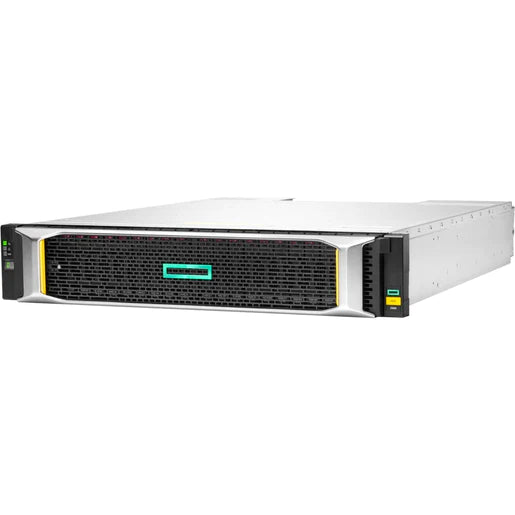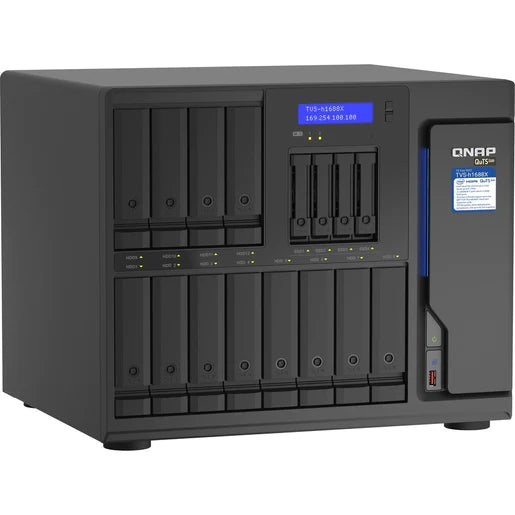
Jul 19, 2023 | Şevval Hazan Haşimoğlu
Why Choosing the Right Storage Arrays and Servers is Crucial for Your Business Operations
Storage Arrays and Servers are powerful crucial components for high-performance operations. Depending on business goals, companies should choose suitable storage arrays and servers to operate with highly efficient data processing. These components have different scales, and companies can aim to set up high-scale Storage Arrays and Servers to have smooth, uninterrupted operations. With Robust hardware and features such as RAID configurations, these components provide reliability, and companies minimize their risks of data loss or failures in the system. Storage Arrays and Servers also provide high levels of security with encryption and access control systems, allowing companies to set up advanced protection. They offer flexible options for different needs, such as HDD, SSD, or m2 SSD, and many different connectivity options. Companies can reduce their IT expenses with the right storage arrays and servers while also having the option to buy energy-efficient models for less power consumption. Before buying new components, companies should check for infrastructure and software compatibility; it is extremely important to have compatible storage arrays and servers with built-in infrastructure for smooth usage and reduced complexity inside the system. The technology inside the storage arrays and servers is future-proofed and can help companies to adopt new features and technologies. Lastly, they are crucial for IT infrastructure for maximum operation efficiency, which enhances all operations while increasing the return on investment.

Types of Storage Arrays and Servers for Different Business Needs
There are many types of storage arrays and servers; let’s look at them quickly.
Direct-Attached Storage, also known as DAS, is directly connected to a server or workstation, providing small businesses with a solid storage array. These arrays are only suitable for low-storage requirements and few users.
Network-Attached Storage (NAS), these arrays are storage devices directly connected to a network, enabling user file transfer via the network connection. NAS is recommended for companies that need shared storage systems.
Storage Area Networks, called SAN, are high-performance block storages for data-intensive tasks and companies with many servers. These storages are connected to a dedicated network and accessed by servers.
Unified Storages combine NAS and SAN arrays, providing all of their features to have more flexibility for the business.
Hybrid Storages combine solid-state and hard disk drivers to balance performance and storage capacity. A good pick for companies that need fast data transfer while having a cost-efficient storage system.
All-Flash Arrays, known as AFA, are premium solid-state drivers that provide extreme speeds and close to no latency storage performance, one of the key pick for companies that need rapid data transferring with low latency.
Converged Infrastructure combines servers, storage arrays, and networks into one interface, simplifying the management inside the system; converged infrastructures are solid options for companies with evolving storage systems.
Hyper-Converged Infrastructure, or HCI, is a superior version of Converged Infrastructures, combining computing, storage, networks, and virtualization in a software-based platform. Providing all the features of Converged Infrastructures.
Cloud Storages are storages hosted in a cloud, providing flexibility and scalability. These storages are usually accessible via network connection enabling file transfer and remote access for companies.
Object Storage is designed for large unstructured data such as documents and backup files. They are the perfect pick for companies with big data storage systems.
Network Attached Storage (NAS): Advantages and Disadvantages and How to Choose the Right One for Your Business

NAS systems have many advantages, such as easy file sharing, simple management of the system, secure data protection, high levels of scalability, and remote accessing. Still, they have limited performance levels and application supports while having a risk of losing all the data inside the storage with a single system failure. Companies should determine their performance, capacity needs, security levels, and connectivity flexibility while choosing a storage array.
Direct Attached Storage (DAS): The Pros and Cons and What to Consider When Choosing a DAS Solution
DAS systems offer high performancesdue to eliminating network latency, providing fast and no-latency data transfer. They are cost-effective compared to other storage arrays with a simple interface with high security due to their direct connection. DAS systems have limited scalability because it is directly connected to a single server; they are managed individually, creating a lack of centralized management. Like NAS systems, it risks losing all data with a single system failure. If you need a direct connection, consider a DAS system but check your performance and capacity needs and connection flexibility.
Storage Area Network (SAN): The Benefits and Drawbacks and How to Select the Best SAN for Your Business Needs
SAN systems are designed to handle workloads that require fast and reliable data access, making them one of the fastest while providing centralized management and robust data protection features like RAID. SAN systems are expensive and require investment; they are complex and have limited file sharing. They are also network depended, potentially causing bottlenecks. Companies should check their performance needs and how much capacity they need now and in the future.
Rack Servers: The Advantages and Disadvantages and What to Look for When Buying a Rack Server
Rack Servers are designed to be space efficient; they offer excellent scalability and simple centralized management with improved cable management. However, Rack servers are expensive and have limited physical expansion options. Before buying a Rack Server, companies should look for performance and scalability levels, server compatibility, remote management capability, and their budget.
Tower Servers: When and Why to Choose a Tower Server and What to Consider When Buying One
Tower Servers are a perfect fit for small to medium-sized businesses as they are compact and office environment friendly. They have high scalability while providing remote access. Businesses should consider calculating the space needed to place tower servers, workload requirements, and expandability options.
Key Factors to Consider When Choosing a Storage Array or Server
One of the most important key factors in calculating the performance requirement for your applications; businesses should consider scalability options for their needs and what level of data protection and redundancy they need to have a safe working environment. Management capabilities and connectivity flexibility are also key factors for businesses.
Scalability and Capacity: What to Look for When Choosing a Storage Solution
When choosing the right storage solution, businesses should consider checking expandability and flexibility and scaling options for their needs. They should also check the capacity needs, future data growth, needed performance levels, and data protection.
Capacity: Understanding Your Business Needs and How to Choose the Right Storage Capacity
Companies should determine the amount of storage space they are currently using and the future growth rate. They should also consider their redundancy requirements for high data protection. Lastly, companies should consider the total cost to minimize expenses.
Scalability: Planning for Future Growth and How to Choose a Storage Array or Server that Can Grow with Your Business
Businesses should consider the expandability options of the storage array or the server; they also need to be sure that the array or server supports flexible scaling and provides the needed performance levels for now and the future.
Performance and Reliability: What to Consider When Choosing a Storage Solution
For the performance of a storage solution, businesses should consider their workload requirements, the technology used in the solution, as well as scalability of it. However, for the reliability part, they need to determine the levels of redundancy and data protection they need, as well as check the solution's error detection and correction capabilities.

Performance: Understanding Your Business Needs and How to Choose the Right Storage Solution for Your Performance Requirements
Companies must determine workload requirements, such as data transfer rates and latency levels. Consider SSDs for high-speed data transfer or hybrid solutions to balance performance and cost. Lastly, check for caching and automated tiering features for better performance.
Reliability: What to Look for When Choosing a Storage Array or Server for Your Business Operations
Businesses should consider what redundancy and data protection levels they need while checking the features of the array or server, such as RAID, MTBF, and MTTR, as well as error detection and correction technology.

No comments yet.